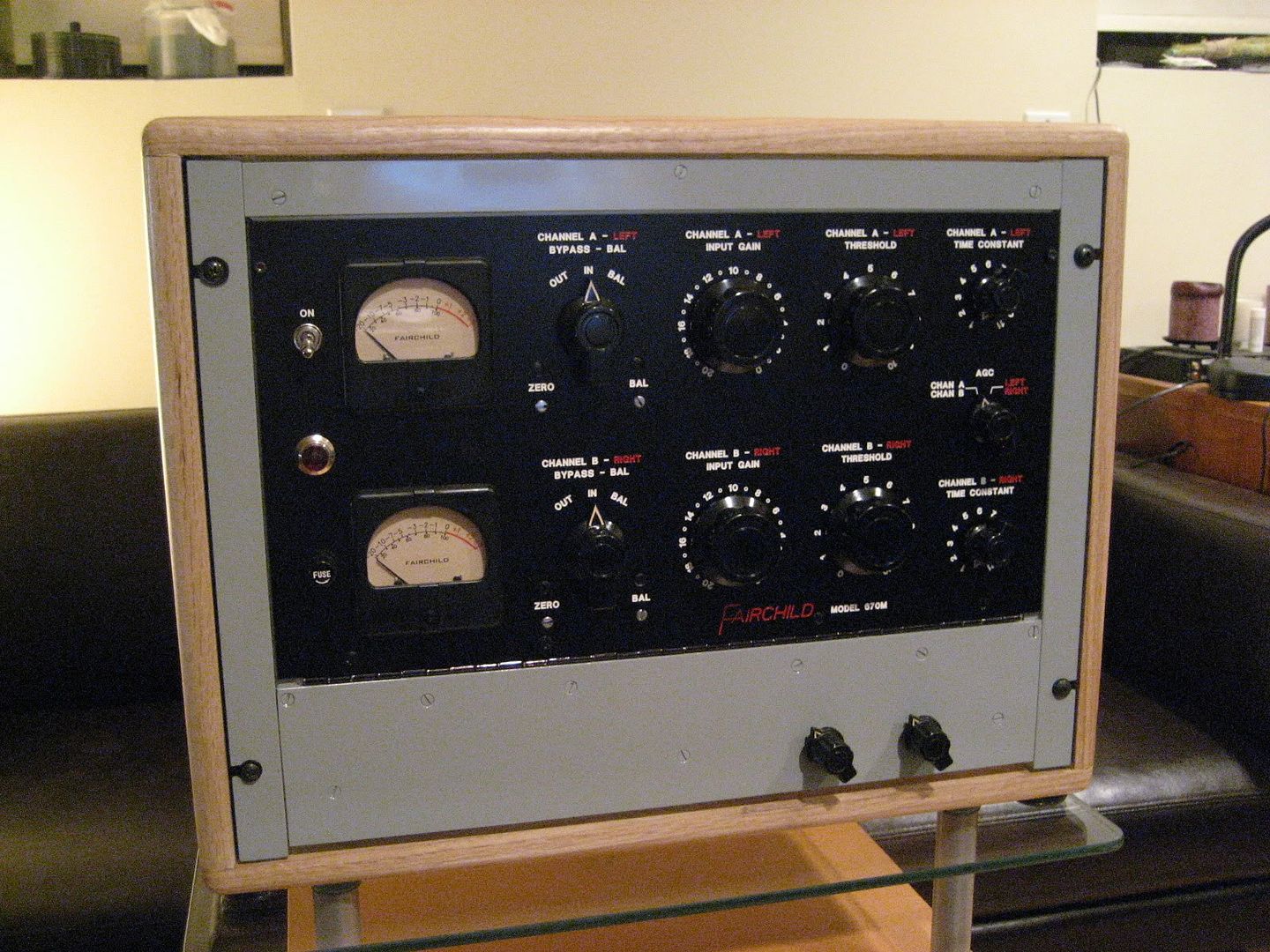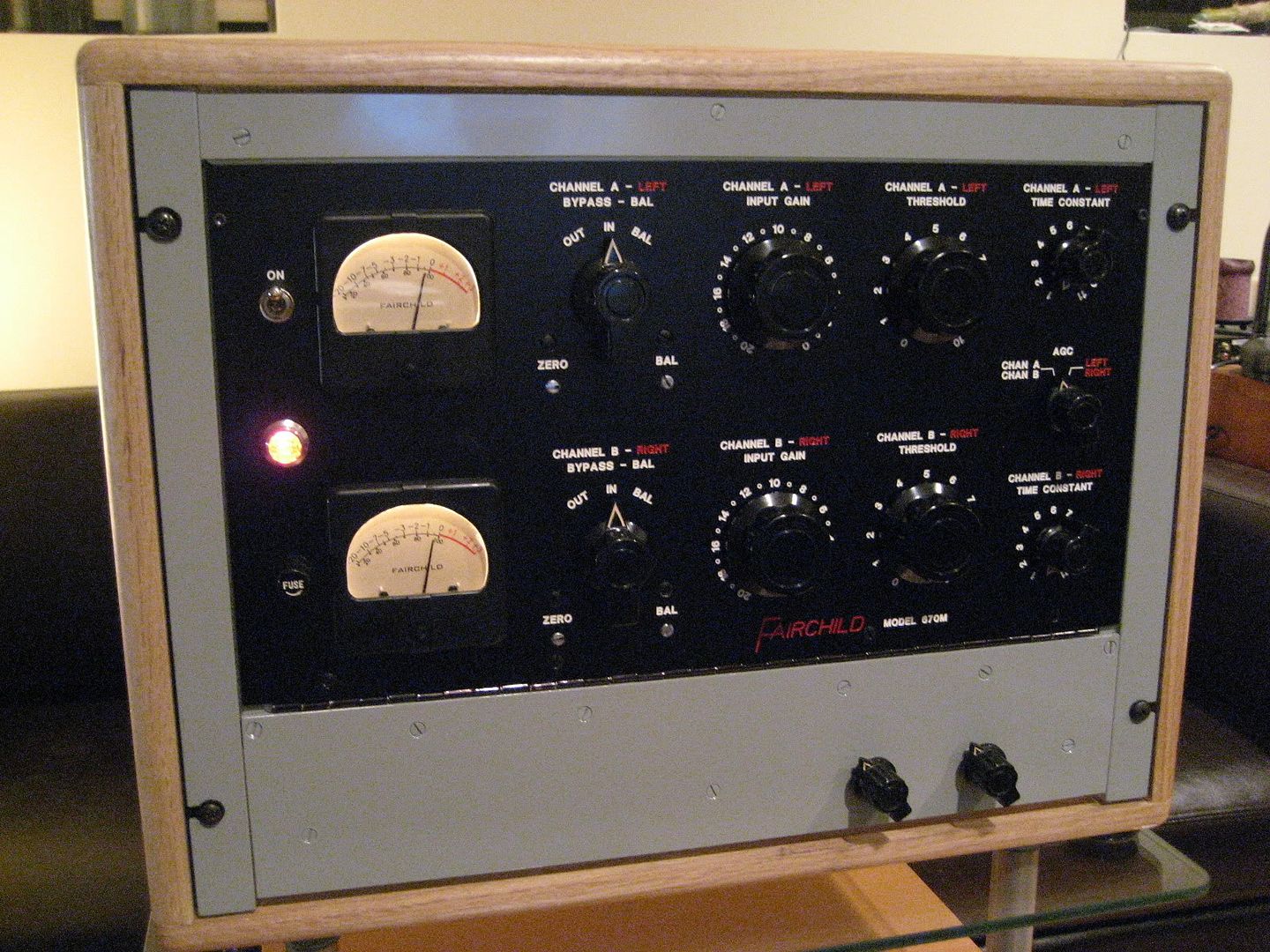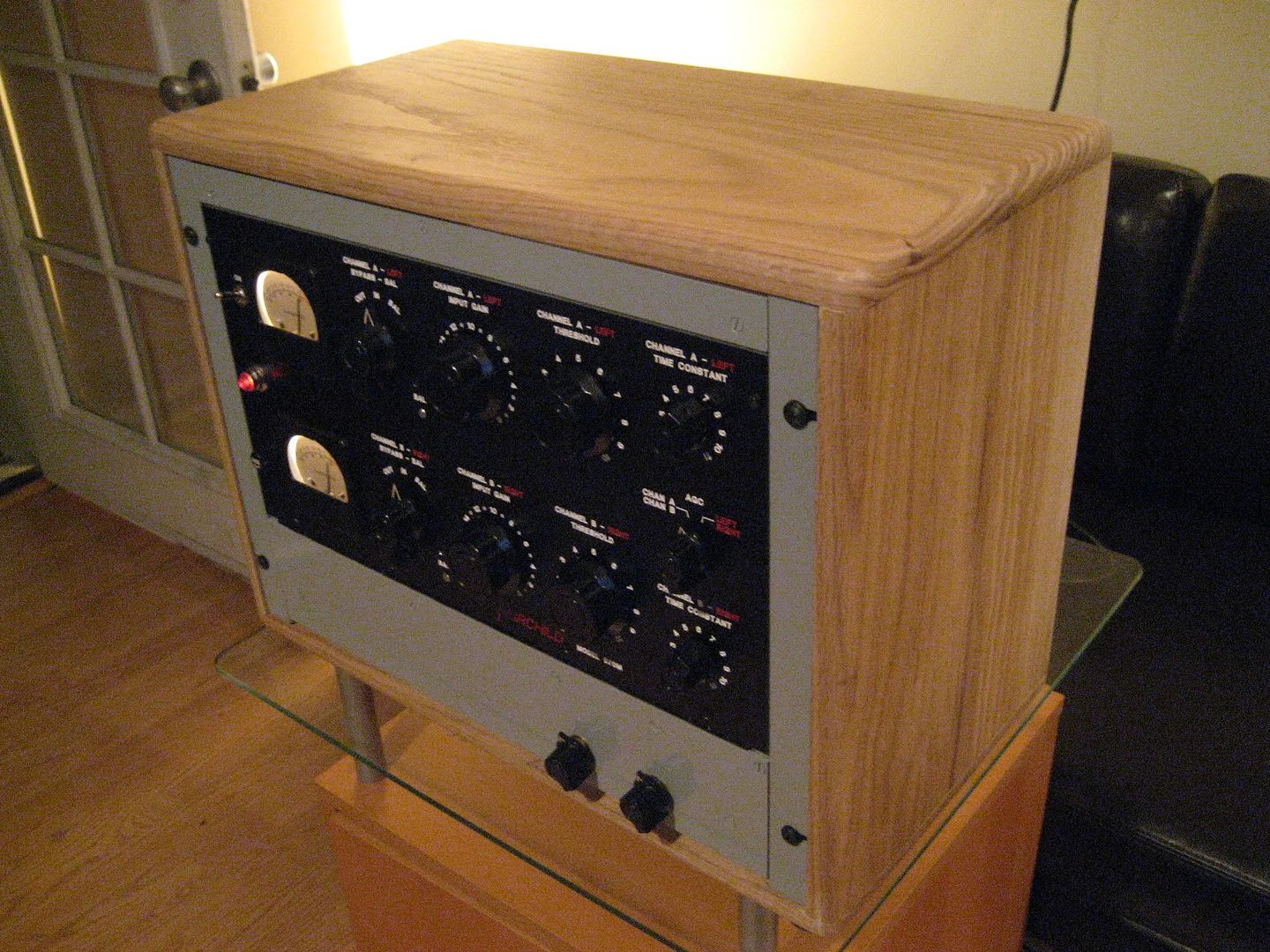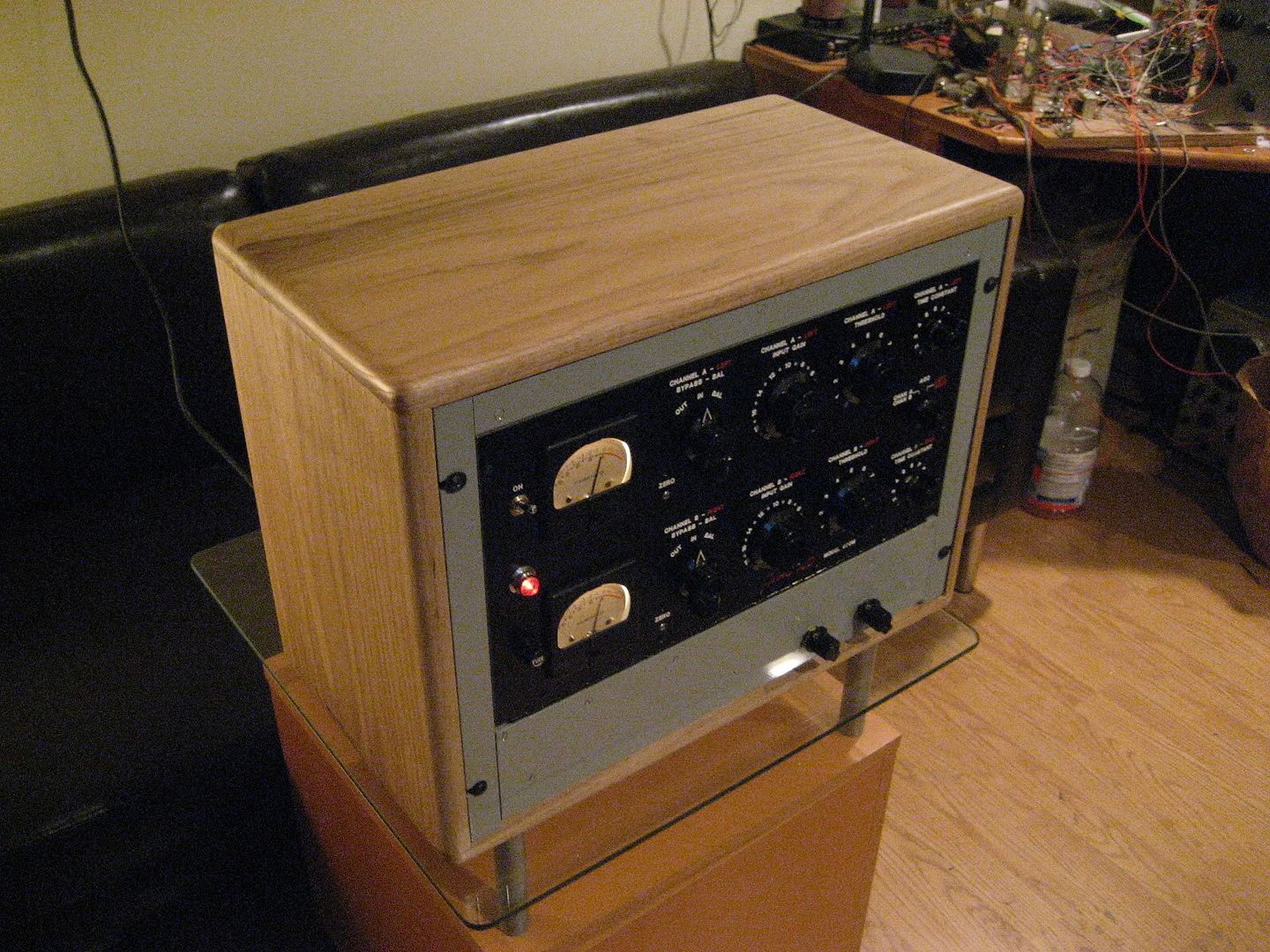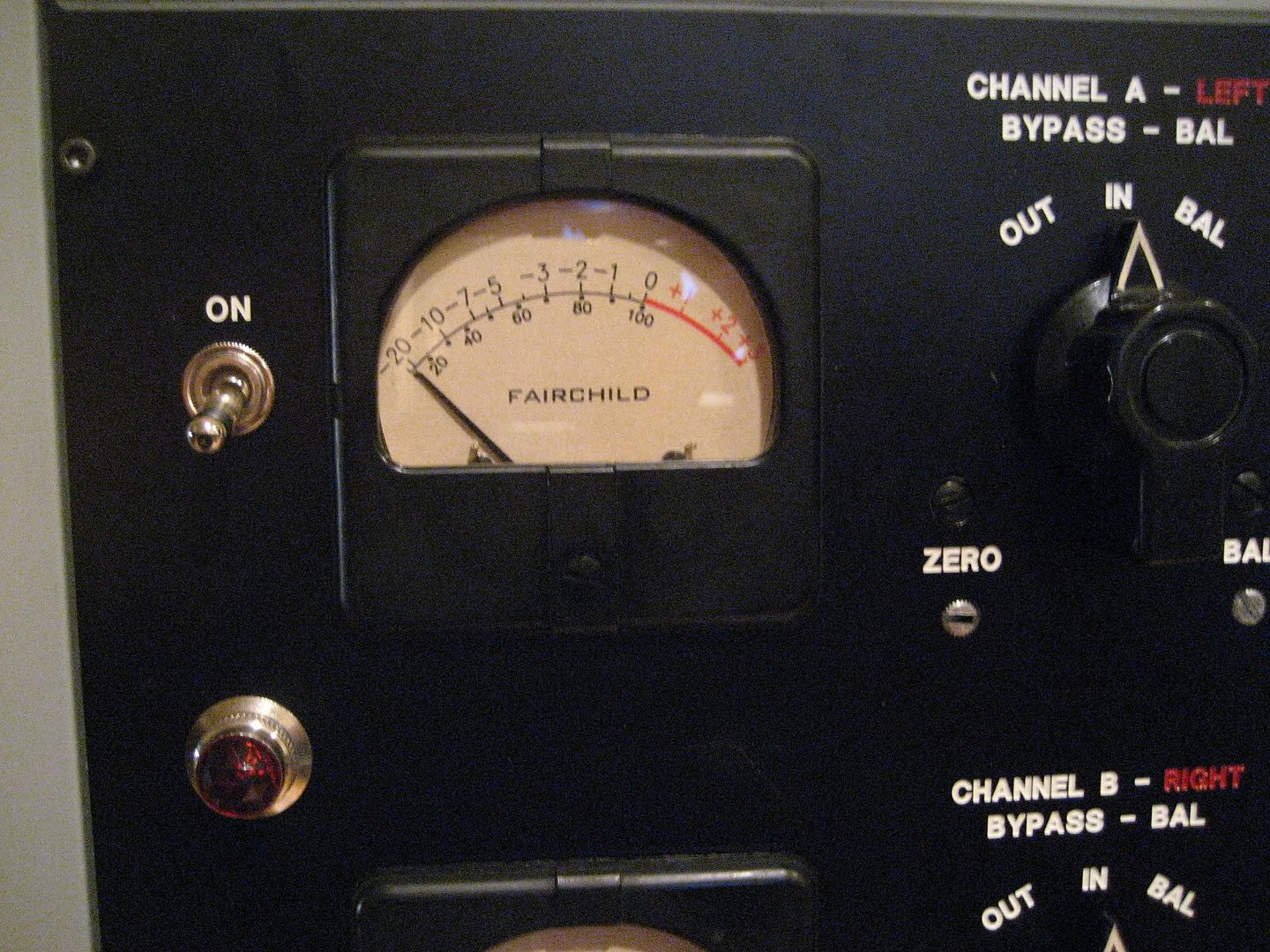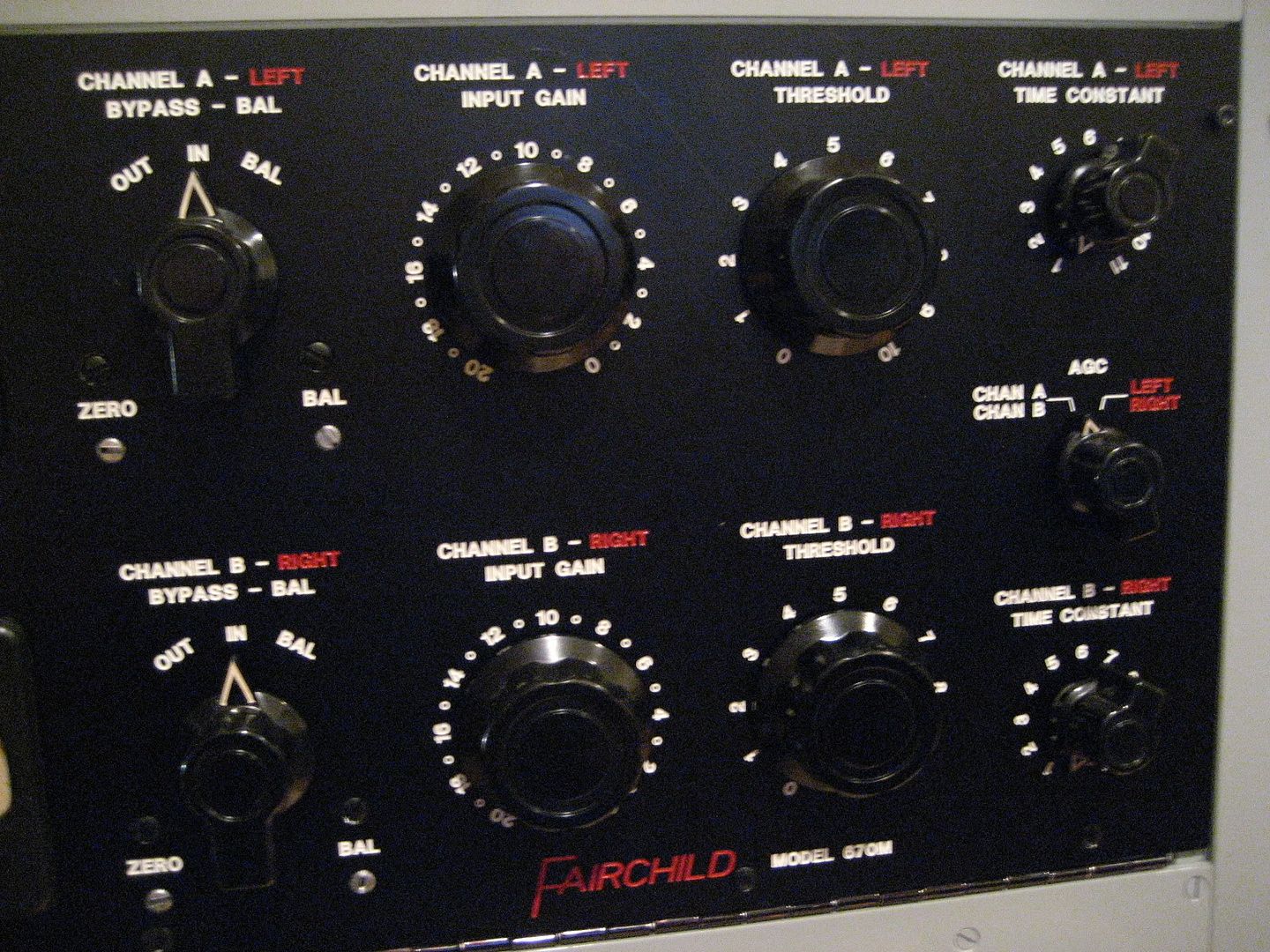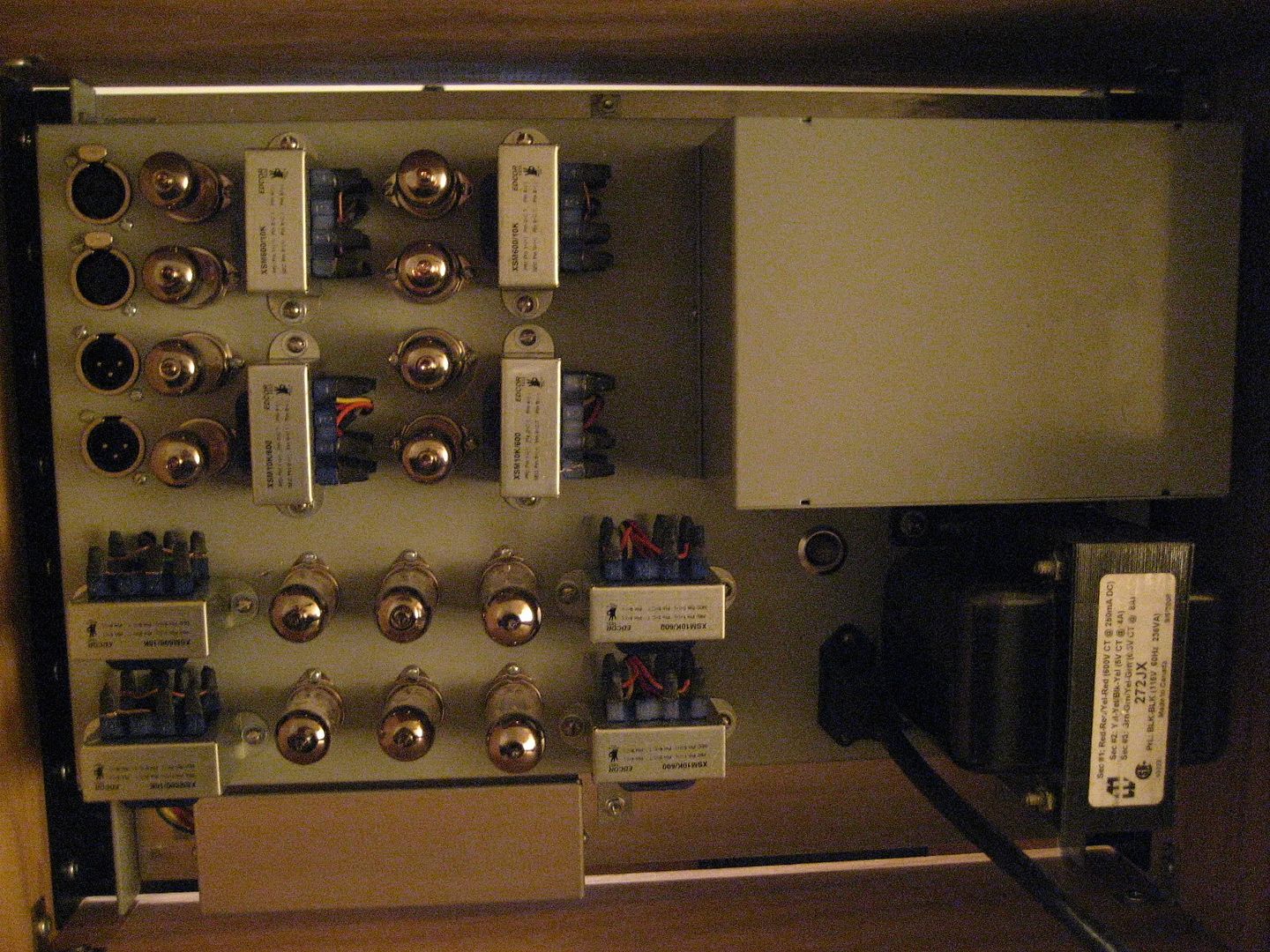Matthew Jacobs said:Rotheu, I have a few questions...
Are those knobs at the bottom of the unit the DC threshold?
Why did the original unit not have them on the face plate? Or have I missed something?
They control the ratio right?
On the schematic of the original 670 it looks like they are trimmers, is that the case?
Are you feeding the plates of the 6BC8 direct from the 240V supply? IIRC this is over their rated speck. Why not 100V anymore?
Why didn't you use a stepped attenuator for the threshold? Wouldn't it help with stereo tracking?
Thanks in advance...
Cheers
JD
Hi, Matthew
The knobs on the bottom of the unit are the DC Threshold controls. Original unit had them as trim pots inside the chassis and it was factory set for some compression curve. I find it very useful to have access to them at any time, they change the sound of the compression a lot, so I used a stepped switch within most useful range (beyond which the threshold is just way too high) for matching between channels when in stereo mode. IMHO this is more critical than having a stepped AC Threshold control. When stereo linked, both channels are compressed by the same amount no matter what, tiny differences in AC threshold position will not have much effect as long as you set the controls close enough for proper tracking. But it's your choice if you want to use stepped control. Now, with DC Threshold it's a different story, because it changes the ratio and the knee of the compression, so it's a good idea to have them matched.
Yes, I'm feeding 6BC8's with 240V, it's very close to the max. rating of 250V (max. rating of 150V is for Class A1 amplifier at max. current of 22mA per side, here they run at 2mA per side with no gain reduction). I know it will shorten the life of the tubes, but they are cheap and it makes big difference in the amount of gain reduction (extends the remote cutoff point to somewhere around -25V to -30V as opposed to -14V to -18V at 100V), headroom, stability and the sound itself. After many listening tests I chose higher voltage. Again, there is always room to experiment, that's why I was waiting all this time and playing with my prototype, until I actually decided to build it.
























